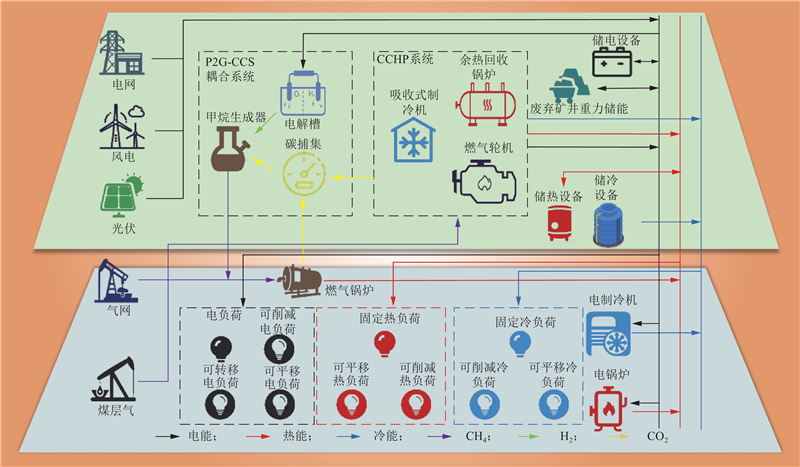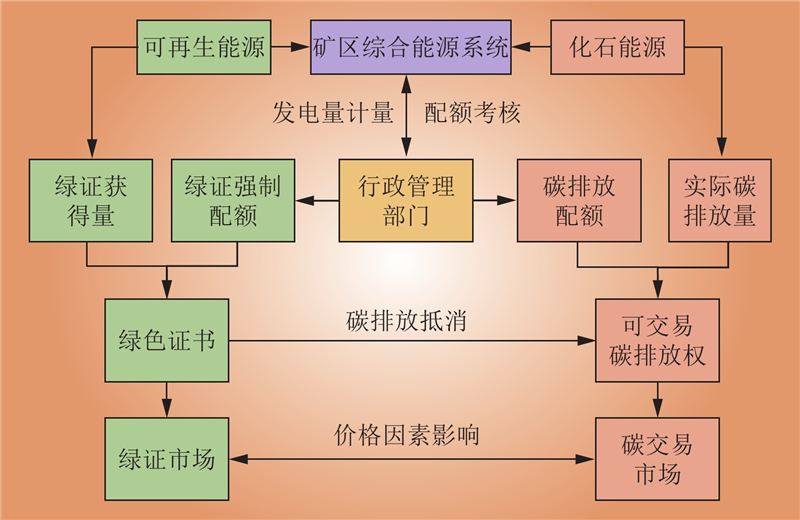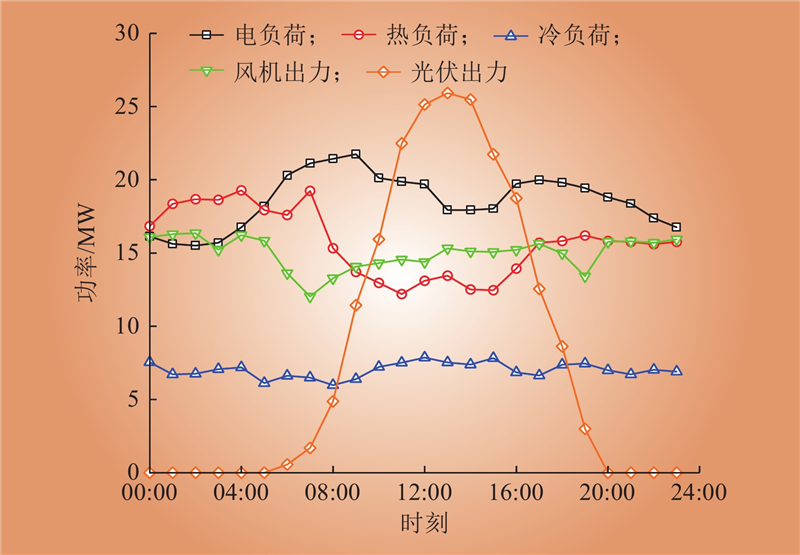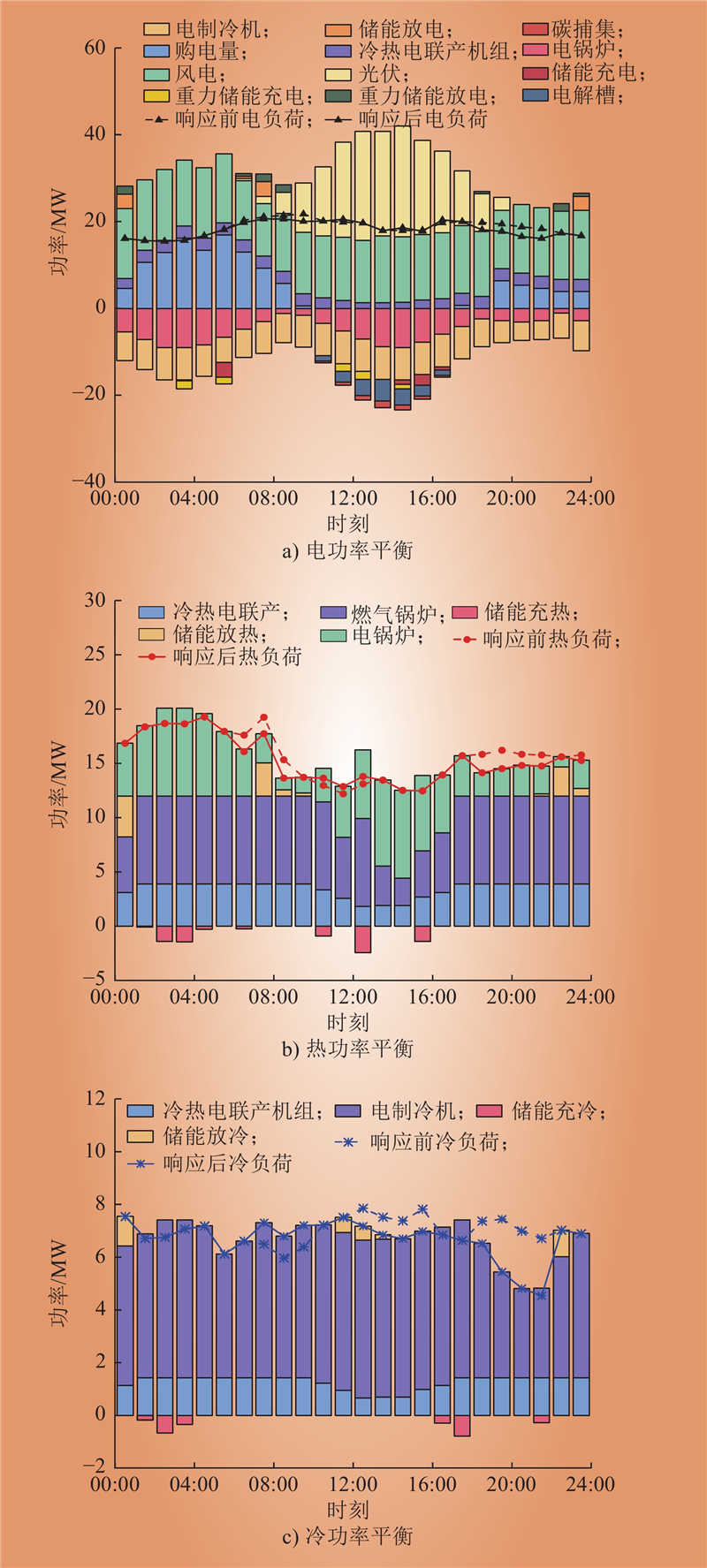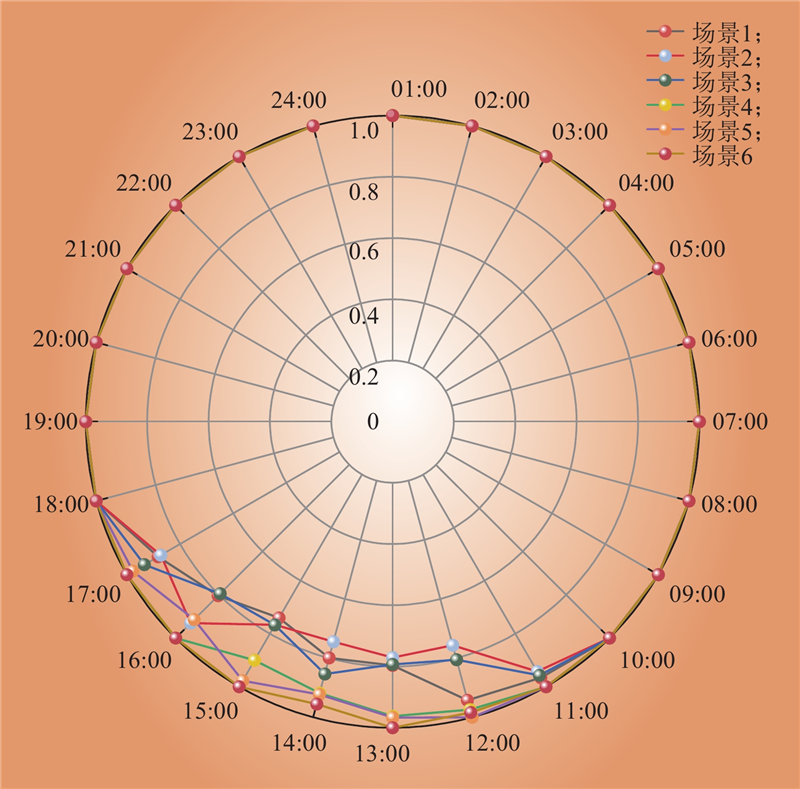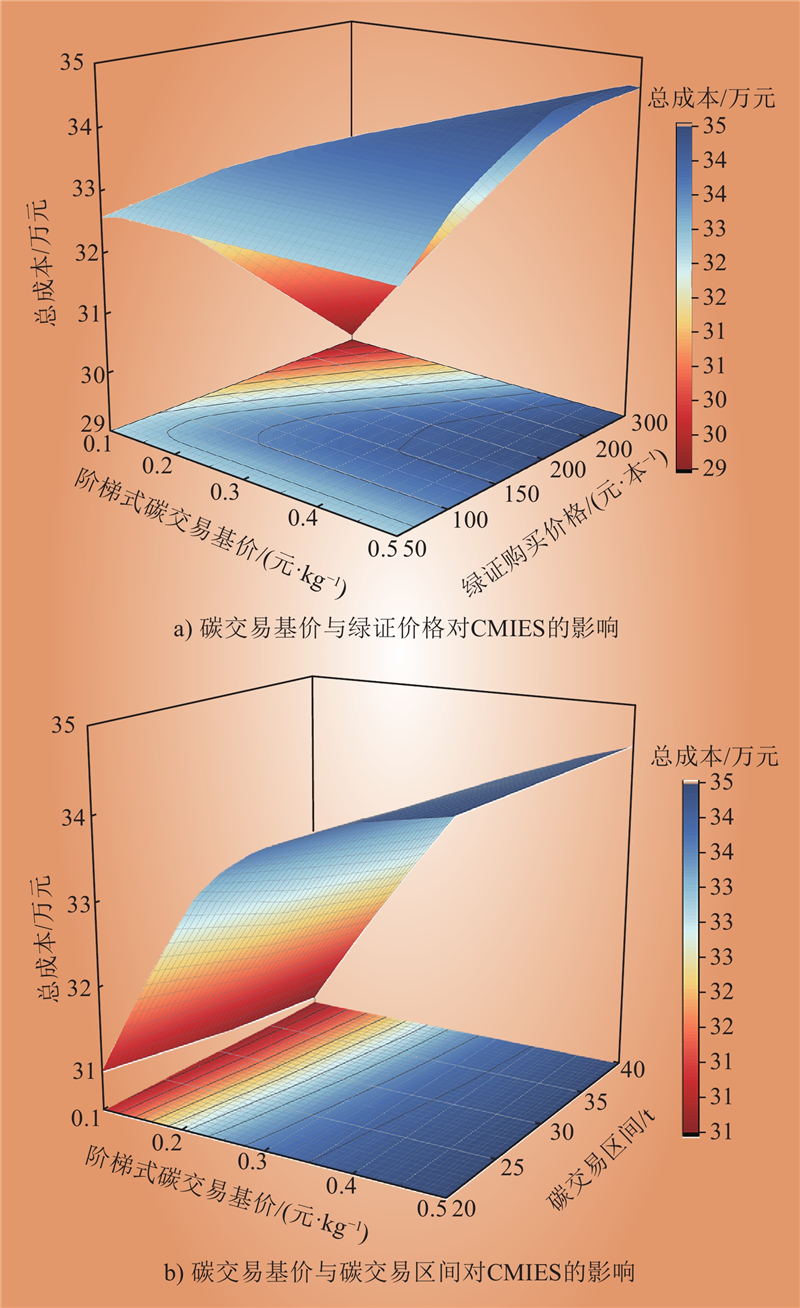| 1 |
郑国光. 支撑“双碳” 目标实现的问题辨识与关键举措研究[J]. 中国电力, 2023, 56 (11): 1- 8.
|
|
ZHENG Guoguang. Problem identification and key measures to support the achievement of carbon peak and carbon neutrality[J]. Electric Power, 2023, 56 (11): 1- 8.
|
| 2 |
赵振宇, 任旭. 考虑动态能价及碳证交易的综合能源系统零碳优化[J]. 电力建设, 2024, 45 (8): 36- 50.
|
|
ZHAO Zhenyu, REN Xu. Zero-carbon optimization of integrated energy system considering dynamic energy prices and carbon certificate trading[J]. Electric Power Construction, 2024, 45 (8): 36- 50.
|
| 3 |
LIU J, LI R, WU T. Short-term multi-objective optimal scheduling of the integrated power grid-abandoned coal mine energy system[J]. Results in Engineering, 2024, 22, 102103.
DOI
|
| 4 |
王龙飞, 王帅, 李庆, 等. “双碳” 目标下西部地区煤矿多能互补供能研究[J]. 中国煤炭, 2023, 49 (10): 36- 42.
|
|
WANG Longfei, WANG Shuai, LI Qing, et al. Research on multi-energy complementary energy supply in coal mines in western China under the goals of carbon peak and carbon neutrality[J]. China Coal, 2023, 49 (10): 36- 42.
|
| 5 |
HUANG H X, LI Z M, BENG GOOI H, et al. Distributionally robust energy-transportation coordination in coal mine integrated energy systems[J]. Applied Energy, 2023, 333, 120577.
DOI
|
| 6 |
黄宏旭, 梁睿, 张小彤, 等. 计及碳约束下的煤矿综合能源系统多目标配置双层优化[J]. 电网技术, 2022, 46 (5): 1731- 1742.
|
|
HUANG Hongxu, LIANG Rui, ZHANG Xiaotong, et al. Two-stage multi-objective deployment optimization of coal mine integrated energy system considering carbon emission constraints[J]. Power System Technology, 2022, 46 (5): 1731- 1742.
|
| 7 |
杨莹, 曹美萱, 赵为光, 等. 煤层气和压缩空气储能复合的矿区综合能源系统优化运行模型[J]. 中国电机工程学报, 2024, 44 (6): 2257- 2270.
|
|
YANG Ying, CAO Meixuan, ZHAO Weiguang, et al. Optimal operation model of complex integrated energy system for mining areas with coalbed methane and compressed air energy storage[J]. Proceedings of the CSEE, 2024, 44 (6): 2257- 2270.
|
| 8 |
江美慧, 许镇江, 牛统科, 等. 考虑综合需求响应的矿区综合能源系统日内多时间尺度滚动优化调度[J]. 综合智慧能源, 2025, 47 (3): 73- 83.
DOI
|
|
JIANG Meihui, XU Zhenjiang, NIU Tongke, et al. Intra-day multi-time scale rolling optimization scheduling of mine integrated energy system considering integrated demand response[J]. Integrated Intelligent Energy, 2025, 47 (3): 73- 83.
DOI
|
| 9 |
GALETAKIS M, BIOTAKIS G, DELIGIORGIS V, et al. Transforming decommissioned mines to a gravity energy storage system[J]. Materials Proceedings, 2023, 15 (1): 14.
|
| 10 |
修雅馨, 刘钦节, 付强, 等. 废弃矿井地下空间物理储能方式对比与优选[J]. 绿色矿冶, 2024, 40 (2): 6- 13.
|
|
XIU Yaxin, LIU Qinjie, FU Qiang, et al. Comparison and optimization of physical energy storage methods in underground space of abandoned mines[J]. Sustainable Mining and Metallurgy, 2024, 40 (2): 6- 13.
|
| 11 |
WANG S J, XIAO H, ZHAO Z Q, et al. Grid peak shaving and energy efficiency improvement: advances in gravity energy storage technology and research on its efficient application[J]. Energies, 2025, 18 (4): 996.
DOI
|
| 12 |
包兴芮, 刘钦节, 杨卿干, 等. 基于风光储配置模型的废弃矿井重力储能参数优化研究[J]. 中国矿业, 2024, 33 (8): 17- 26, 16.
DOI
|
|
BAO Xingrui, LIU Qinjie, YANG Qinggan, et al. Research on parameter optimization of gravity energy storage in abandoned mines based on wind-solar storage configuration model[J]. China Mining Magazine, 2024, 33 (8): 17- 26, 16.
DOI
|
| 13 |
原希尧, 王关涛, 朱若源, 等. 碳-绿色证书交易机制下考虑回收P2G余热和需求响应的PIES优化调度[J]. 电力建设, 2023, 44 (3): 25- 35.
|
|
YUAN Xiyao, WANG Guantao, ZHU Ruoyuan, et al. Optimal scheduling of park integrated energy system with P2G waste heat recovery and demand response under carbon-green certificate trading mechanism[J]. Electric Power Construction, 2023, 44 (3): 25- 35.
|
| 14 |
陈艳波, 张宁, 李嘉祺, 等. 零碳园区研究综述及展望[J]. 中国电机工程学报, 2024, 44 (14): 5496- 5517.
|
|
CHEN Yanbo, ZHANG Ning, LI Jiaqi, et al. Review and prospect of zero carbon park research[J]. Proceedings of the CSEE, 2024, 44 (14): 5496- 5517.
|
| 15 |
李欣, 陈英彰, 李涵文, 等. 考虑碳交易的电-热综合能源系统两阶段鲁棒优化低碳经济调度[J]. 电力建设, 2024, 45 (6): 58- 69.
DOI
|
|
LI Xin, CHEN Yingzhang, LI Hanwen, et al. Two-stage robust optimization of low-carbon economic dispatch for electricity-thermal integrated energy system considering carbon trade[J]. Electric Power Construction, 2024, 45 (6): 58- 69.
DOI
|
| 16 |
陈彦奇, 刘康祥, 赵鑫, 等. 基于阶梯型碳交易机制的综合能源系统低碳经济调度[J]. 动力工程学报, 2023, 43 (7): 901- 909, 916.
|
|
CHEN Yanqi, LIU Kangxiang, ZHAO Xin, et al. Low-carbon economic dispatch of integrated energy system based on ladder-type carbon trading mechanism[J]. Journal of Chinese Society of Power Engineering, 2023, 43 (7): 901- 909, 916.
|
| 17 |
刘珊珊, 李柯睿, 刘柏康, 等. 绿证—碳联合机制下含多类型需求响应和氢能多元利用的综合能源系统优化调度[J]. 电力科学与技术学报, 2024, 39 (5): 203- 215, 225.
|
|
LIU Shanshan, LI Kerui, LIU Baikang, et al. Optimal dispatching of integrated energy systems with diverse demand response and multifaceted hydrogen utilization under green certificate-carbon joint mechanism[J]. Journal of Electric Power Science and Technology, 2024, 39 (5): 203- 215, 225.
|
| 18 |
李亚峰, 王维庆, 寇洋, 等. 考虑绿证-碳联合交易与需求响应综合能源系统经济运行[J]. 太阳能学报, 2023, 44 (11): 538- 546.
|
|
LI Yafeng, WANG Weiqing, KOU Yang, et al. Considering green certificate-carbon joint trading and demand response integrated energy system economic operation[J]. Acta Energiae Solaris Sinica, 2023, 44 (11): 538- 546.
|
| 19 |
骆钊, 罗蒙顺, 沈鑫, 等. 基于碳捕集-电转气的矿区综合能源系统协同优化调度[J]. 电力系统自动化, 2024, 48 (3): 22- 30.
DOI
|
|
LUO Zhao, LUO Mengshun, SHEN Xin, et al. Collaborative optimal scheduling of coal mine integrated energy system based on carbon capture and power to gas[J]. Automation of Electric Power Systems, 2024, 48 (3): 22- 30.
DOI
|
| 20 |
邓杰, 姜飞, 王文烨, 等. 考虑电热柔性负荷与氢能精细化建模的综合能源系统低碳运行[J]. 电网技术, 2022, 46 (5): 1692- 1704.
|
|
DENG Jie, JIANG Fei, WANG Wenye, et al. Low-carbon optimized operation of integrated energy system considering electric-heat flexible load and hydrogen energy refined modeling[J]. Power System Technology, 2022, 46 (5): 1692- 1704.
|
| 21 |
谭虎, 王小亮, 徐亭亭, 等. 风光沼储交直流混合农村微电网经济技术优化[J]. 中国电力, 2024, 57 (3): 27- 33.
|
|
TAN Hu, WANG Xiaoliang, XU Tingting, et al. Economic and technological optimization of hybrid rural microgrid with wind, PV, biogas, storage, AC, and DC[J]. Electric Power, 2024, 57 (3): 27- 33.
|
| 22 |
向开端, 王辉, 彭婷婷, 等. 含混合储能的风光储系统容量优化配置[J]. 科学技术与工程, 2023, 23 (31): 13415- 13422.
DOI
|
|
XIANG Kaiduan, WANG Hui, PENG Tingting, et al. Optimal capacity allocation of wind-solar-storage system with hybrid energy storage[J]. Science Technology and Engineering, 2023, 23 (31): 13415- 13422.
DOI
|
| 23 |
杨晓辉, 邓叶恒, 王晓鹏, 等. 基于碳交易-绿色证书联合交易机制的含CHP-CCS-P2G耦合的区域综合能源系统低碳经济调度[J]. 太阳能学报, 2024, 45 (6): 244- 254.
|
|
YANG Xiaohui, DENG Yeheng, WANG Xiaopeng, et al. Low-carbon economic dispatching of regional integrated energy system with CHP-CCS-P2G coupling based on carbon trade-green certificate joint trading mechanism[J]. Acta Energiae Solaris Sinica, 2024, 45 (6): 244- 254.
|
| 24 |
李金鸿, 刘洋, 许立雄. 计及综合需求响应的综合能源系统集群多能源精细化日前交易模型[J]. 电力建设, 2024, 45 (12): 83- 99.
DOI
|
|
LI Jinhong, LIU Yang, XU Lixiong. Multi-energy refined day-ahead trading model of integrated energy system cluster considering integrated demand response[J]. Electric Power Construction, 2024, 45 (12): 83- 99.
DOI
|
| 25 |
郭斯琦, 楼劲, 郑凌蔚. 考虑热网特性的综合能源系统混合时间尺度调度方法[J]. 电力建设, 2024, 45 (12): 16- 26.
|
|
GUO Siqi, LOU Jin, ZHENG Lingwei. Hybrid time scale scheduling method for integrated energy systems considering the characteristics of heating networks[J]. Electric Power Construction, 2024, 45 (12): 16- 26.
|
| 26 |
高月芬, 员成博, 孔凡鹏, 等. 需求响应激励下耦合电转气、碳捕集设备的综合能源系统优化[J]. 中国电力, 2024, 57 (4): 32- 41.
|
|
GAO Yuefen, YUN Chengbo, KONG Fanpeng, et al. Optimization of integrated energy system coupled with power-to-gas and carbon capture and storage equipment under demand response incentive[J]. Electric Power, 2024, 57 (4): 32- 41.
|
| 27 |
胡长斌, 蔡晓钦, 赵鑫宇, 等. 含光热电站及碳交易机制下的电气热多能流耦合系统分层优化运行[J]. 电力建设, 2024, 45 (3): 27- 38.
|
|
HU Changbin, CAI Xiaoqin, ZHAO Xinyu, et al. Optimized operation of electric thermal multi-energy flow coupling system under concentrating solar power plant and carbon trading mechanism[J]. Electric Power Construction, 2024, 45 (3): 27- 38.
|
| 28 |
陈兴龙, 曹喜民, 陈洁, 等. 绿证-碳交易机制下热电灵活响应的园区综合能源系统优化调度[J]. 中国电力, 2024, 57 (6): 110- 120.
|
|
CHEN Xinglong, CAO Ximin, CHEN Jie, et al. Optimized dispatch of park integrated energy system with thermoelectric flexible response under green certificate-carbon trading mechanism[J]. Electric Power, 2024, 57 (6): 110- 120.
|
| 29 |
尚楠, 陈政, 卢治霖, 等. 电力市场、碳市场及绿证市场互动机理及协调机制[J]. 电网技术, 2023, 47 (1): 142- 154.
|
|
SHANG Nan, CHEN Zheng, LU Zhilin, et al. Interaction principle and cohesive mechanism between electricity market, carbon market and green power certificate market[J]. Power System Technology, 2023, 47 (1): 142- 154.
|
| 30 |
王辉, 周珂锐, 吴作辉, 等. 含电转气和碳捕集耦合的综合能源系统多时间尺度优化调度[J]. 中国电力, 2024, 57 (8): 214- 226.
|
|
WANG Hui, ZHOU Kerui, WU Zuohui, et al. Multi-time scale optimal scheduling of integrated energy system coupling power-to-gas and carbon capture system[J]. Electric Power, 2024, 57 (8): 214- 226.
|
| 31 |
贠保记, 赵文, 王建学, 等. 低碳矿区综合能源系统经济运行优化研究[J]. 电力系统保护与控制, 2024, 52 (6): 177- 187.
|
|
YUN Baoji, ZHAO Wen, WANG Jianxue, et al. Economic operation optimization of an integrated energy system in low carbon mining area[J]. Power System Protection and Control, 2024, 52 (6): 177- 187.
|


